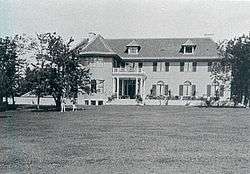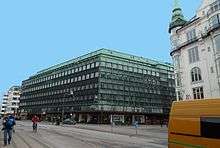Povl Baumann

Povl Erik Raimund Baumann (9 November 1878 - 3 July 1963) was a Danish architect who was a central figure during the transition from Neoclassicism to Functionalism in Danish residential architecture. In 1910 he co-founded Den frie Architektforening, an alternative architects' association, and headed it for the nine years it existed.
Biography
Baumann was born on 9 November 1878 to translator Heinrich Johann Raimund Baumann and Julie Augusta née Riise. He first enrolled at the College of Advanced Technology to become a building engineer but discontinued his studies after just three semesters in 1898. Instead he took classes at a technical school from 1899 to 1901 while at the same time apprenticing as a mason. He was admitted to the Royal Danish Academy of Fine Arts in 1900 but dissatisfied with the teachings, left just two years later and was instead articled to Peder Vilhelm Jensen-Klint. After participating in an archaeological expedition to Rhodes from 1803 to 1805, he worked for Jensen-Kling, Axel Preisler, Ulrik Plesner, and professor Heinrich Wenck at the design office of the Danish State Railways from 1908 to 1910. He won a scholarship from the Art Academy in 1907 and his buildings won several awards.
Independent work
In 1910 he set up his own practice where he mainly designed residential projects.[1]
Selected works

- Church, Saint Croix (1913)
- Classens Have housing (1924, with Carl Petersen and Ole Falkentorp),
- Villa Svastika (later Christianshøj), Strandvejen, Rungsted (1927, garden by G.N. Brandt, demolished 1983)
- Linoleumshuset, Copenhagen (1930–31)[2]
- Ved Vesterport office building (1930–32, with Ole Falkentorp)
- Storgården residential building, Copenhagen (1935, with Knud Hansen)
- Dansk Industri, Copenhagen (1938–39)
Gallery
 Ved Vesterport, Copenhagen (1930–32)
Ved Vesterport, Copenhagen (1930–32) Storgården, Copenhagen (1935)
Storgården, Copenhagen (1935)
References
- ↑ "Povl Baumann". Gyldendal. Retrieved 2011-04-12.
- ↑ "Fredningsforslag -"Linoleumshuset"" (PDF). Landsforeningen for Bygnings- og Landskabskultur. Retrieved 2011-04-13.